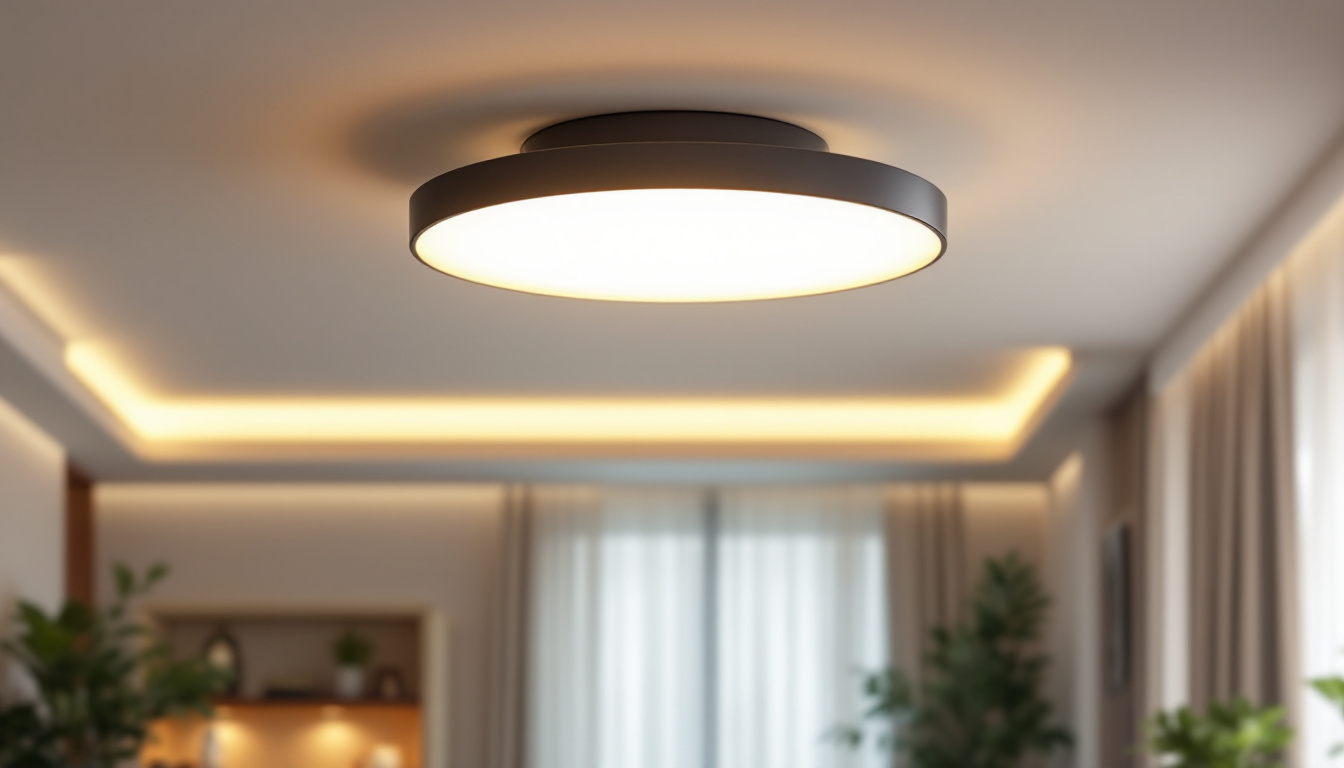
Lighting is an essential aspect of any space, influencing not only the aesthetics but also the functionality and mood. For lighting contractors, understanding the nuances of light switches and dimmers is crucial. This article explores best practices for selecting, installing, and maintaining these devices, ensuring optimal performance and customer satisfaction.
The primary function of a light switch is to control the flow of electricity to a light fixture, allowing users to turn lights on and off. Dimmers, on the other hand, provide the ability to adjust the brightness of a light, offering versatility in lighting design. Both devices come in various styles and technologies, making it essential for contractors to be well-versed in their characteristics.
Light switches can be categorized into several types, including toggle, rocker, and smart switches. Toggle switches are the traditional option, featuring a lever that moves up and down. Rocker switches, which have a flat surface, are often seen in modern homes due to their sleek design.
Smart switches have gained popularity in recent years, allowing users to control lights via smartphone apps or voice commands. These switches often integrate with home automation systems, providing added convenience and energy efficiency. Additionally, many smart switches can be programmed to follow specific schedules, such as turning lights on at sunset or off during the night, which enhances security by simulating occupancy when homeowners are away.
Dimmers come in various forms, including rotary, slide, and smart dimmers. Rotary dimmers feature a knob that can be turned to adjust brightness, while slide dimmers utilize a sliding mechanism. Smart dimmers, similar to smart switches, offer remote control capabilities and can often be programmed for specific lighting scenes.
When selecting dimmers, it is important to consider compatibility with the type of light bulbs being used, as not all dimmers work with every bulb type. LED and CFL bulbs, for instance, require specific dimmers to function correctly without flickering or buzzing. Moreover, the choice of dimmer can significantly impact the overall ambiance of a space; for example, a well-placed dimmer in a dining room can create a cozy atmosphere for intimate dinners, while a more robust dimmer in a home theater can enhance the cinematic experience by allowing for complete control over lighting levels.
Furthermore, the installation of dimmers and switches can also influence energy consumption. By utilizing dimmers, homeowners can reduce energy usage by lowering the brightness of their lights, which not only extends the lifespan of the bulbs but also contributes to lower electricity bills. In recent studies, it has been shown that using dimmers can lead to a reduction in energy consumption by up to 20%, making them an environmentally friendly choice as well. This aspect is particularly appealing to those looking to adopt more sustainable living practices, as it aligns with the growing trend of eco-conscious home improvements.
Choosing the right dimmer is crucial for ensuring optimal performance and customer satisfaction. Several factors should be considered during the selection process.
Before purchasing a dimmer, it is essential to verify its compatibility with the light bulbs intended for use. LED and CFL bulbs are particularly sensitive to dimmer types, and using an incompatible dimmer can lead to performance issues. Always check the manufacturer’s specifications to ensure a seamless match.
For incandescent and halogen bulbs, most standard dimmers will suffice. However, with the increasing use of LED technology, it is vital to stay informed about the latest compatible dimmers to avoid customer complaints. Additionally, some dimmers are designed specifically for certain bulb types, offering features like flicker-free performance and smoother dimming capabilities. Educating customers about these options can enhance their overall experience and satisfaction with their lighting choices.
Each dimmer switch has a specified load capacity, which refers to the maximum wattage it can handle. Exceeding this limit can lead to overheating and potential fire hazards. When selecting a dimmer, contractors should calculate the total wattage of the bulbs connected to it and ensure that it falls within the dimmer’s rated capacity.
For larger lighting installations, it may be beneficial to use multiple dimmers or a centralized lighting control system to distribute the load effectively. This approach not only enhances safety but also allows for more versatile lighting control. Furthermore, some advanced dimmers come equipped with features such as programmable settings and remote control capabilities, enabling users to create customized lighting scenes that can adapt to different activities or moods throughout the day.
As energy efficiency becomes increasingly important, selecting dimmers that promote energy savings is a best practice for lighting contractors. Many modern dimmers are designed to reduce energy consumption, particularly when used with LED bulbs.
By educating clients on the benefits of energy-efficient dimmers, contractors can help them make informed decisions that align with sustainability goals. This not only enhances customer satisfaction but also positions contractors as knowledgeable professionals in the field. Additionally, implementing energy-efficient dimmers can contribute to significant cost savings on electricity bills over time, making them a financially savvy choice for homeowners and businesses alike. Highlighting these long-term benefits can encourage clients to invest in higher-quality dimming solutions that support both their aesthetic preferences and environmental responsibilities.
Proper installation of light switches and dimmers is critical for ensuring safety and functionality. Following best practices during the installation process can prevent common issues and enhance the longevity of the devices.
Before beginning any electrical work, safety should be the top priority. Contractors should always turn off the power at the circuit breaker and use a voltage tester to ensure that no electricity is flowing to the wires. Wearing appropriate personal protective equipment (PPE) is also recommended to minimize risks.
Additionally, adhering to local electrical codes and regulations is essential. These codes are designed to ensure safety and reliability, and failing to comply can lead to serious consequences, including fines or legal issues.
Correct wiring is crucial for the performance of light switches and dimmers. Contractors should carefully follow the manufacturer’s instructions for wiring configurations. This often includes connecting wires to the correct terminals and ensuring that connections are secure.
Using wire nuts to secure connections and electrical tape to cover exposed wires can help prevent short circuits and enhance safety. It’s also advisable to label wires during the installation process, especially in complex setups, to simplify future maintenance or upgrades.
Once the installation is complete, testing the functionality of the light switches and dimmers is essential. This includes checking that the lights turn on and off as expected, as well as confirming that dimming functions operate smoothly without flickering or buzzing.
If any issues arise during testing, troubleshooting should be conducted immediately. This may involve checking wiring connections, ensuring compatibility with light bulbs, or replacing faulty components. Addressing these concerns promptly can save time and enhance customer satisfaction.
Regular maintenance and troubleshooting are key to ensuring the longevity and performance of light switches and dimmers. Contractors should educate clients on how to care for their lighting systems and what to do in case of issues.
Encouraging clients to conduct routine inspections of their light switches and dimmers can help identify potential problems before they escalate. This includes checking for signs of wear, such as discoloration or physical damage, as well as ensuring that all connections remain secure.
Additionally, clients should be advised to clean the surfaces of switches and dimmers periodically to remove dust and debris, which can affect performance. A simple wipe with a damp cloth can often suffice, but care should be taken not to use harsh chemicals that could damage the finish.
Lighting contractors should be familiar with common issues that may arise with light switches and dimmers. For example, if lights flicker or buzz when dimmed, it may indicate an incompatible dimmer or bulb. In such cases, replacing the dimmer with a compatible model or switching to a different bulb type can resolve the issue.
Another common problem is the failure of a dimmer to adjust brightness properly. This could be due to a faulty dimmer switch or incorrect wiring. Troubleshooting should include checking connections and testing the dimmer with a different light fixture to determine the source of the problem.
Providing clients with information on the proper use and care of light switches and dimmers can enhance their experience and satisfaction. This may include guidance on how to adjust settings, the importance of using compatible bulbs, and tips for troubleshooting common issues.
By empowering clients with knowledge, contractors can foster trust and establish long-term relationships, which can lead to repeat business and referrals.
Light switches and dimmers play a vital role in the functionality and ambiance of any space. For lighting contractors, understanding the best practices for selecting, installing, and maintaining these devices is essential for delivering high-quality service.
By staying informed about the latest technologies, adhering to safety regulations, and educating clients, contractors can enhance their reputation and ensure customer satisfaction. As the demand for energy-efficient and smart lighting solutions continues to grow, embracing these best practices will position lighting contractors for success in a competitive market.
Ready to elevate your lighting projects with the best in class products? Look no further than LumenWholesale for all your lighting needs. We provide contractors with high-quality, specification-grade lighting products at unbeatable wholesale prices. With our direct approach, you avoid unnecessary markups and enjoy superior lighting products that meet the highest industry standards. Plus, our hassle-free bulk buying and free shipping mean you get the premium lighting you need at the best value — without hidden fees or compromises. Make your next project shine with the perfect blend of quality, affordability, and convenience. Visit LumenWholesale today for Wholesale Lighting at the Best Value.

Discover the ultimate guide to LED tape dimmers with our essential checklist tailored for lighting professionals.

Illuminate your projects with expert insights on outside pot lights.

Discover the benefits of solar-powered lamp posts and learn how to future-proof your lighting projects with sustainable technology.

Discover expert insights from lighting contractors on selecting and installing flush ceiling light fixtures.